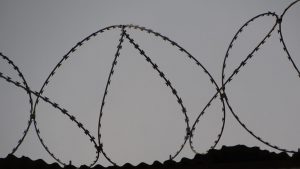The union representing sprinkler fitters in Manitoba has reached an agreement with the Canadian Automatic Sprinkler Association (CASA) on a new three-year contract, after a seven day strike over worker retention and higher wages.
“We are pleased with the results of the agreement and are always happy when somebody gets back to work,” said John Galt, president of the CASA.
“It’s a nationally ratified agreement and sometimes regional ratification varies from the majority in the national to the provincial.”
“The end result is we are happy with the agreement and the process,” he said.
Local 254, which represents the main pipe-fitting trades in Manitoba, reached the agreement on June 9.
The union has about 1,200 members, who had been without a contract with CASA since the end of May.
“It’s a national agreement, but here in Manitoba if a collective agreement is voted down our members don’t have to work for it,” said Local 254 business manager Heiko Wieshern.
“The increases are lower that many other contracts being negotiated provincially, with the loading of the first two years of the contract. But, we have a commitment from the contractors that make the agreement reasonable.”
Wieshern said the sprinkler fitters negotiated a three-year contract, which increases the base rate of a journeyman’s wage to $37.58 an hour from $35.98.
This increase of $1.60 an hour will be applied in the first and second year of the contract. In the third year, the base rate will increase by 85 cents.
During a four year apprenticeship, the wage is: 50 per cent of the journeyman base rate in year one; 60 per cent in year two; 70 per cent in year three; and 80 per cent in year four.
“The biggest thing was getting a commitment from CASA to sit down six months prior to the next negotiation to look at the dynamics of Manitoba that will affect sprinkler fitters,” said Wieshern.
He explained that a committee will be set up to pre-negotiate the issues that need to be addressed in Manitoba before the next round of negotiations begin in March 2016.
By this time, Wieshern said the wage differential with other provinces could increase to $7.50 an hour.
The committee negotiating the next contract will be made up of three members from both CASA and the Local 254.
According to Wieshern, the main issue behind the strike was a combination of worker retention and wages.
He said workers in northern Ontario are making on average about $4.50 more per hour than local sprinkler fitters. The wage differential in Saskatchewan isn’t as bad.
However, workers in Alberta are getting a signing bonus, while being flown in and out of work camps on a three week shift with one week off. In this case, the wage package difference could be as much as $7.50 to $10 an hour.
“Our biggest concern is that we are losing our tradespeople,” said Wieshern.
“In the industrial area, we are losing workers to Saskatchewan and getting them back is difficult.”
He said Local 254 has about 90 members with travel cards in Alberta or Saskatchewan.
“Our contractors invest a lot in apprenticeship and as soon as they finish they leave,” Wieshern said.
“It also makes it more difficult to train apprentices as well because there is a one to one ratio. These are all concerns that need to be addressed the next time we sit down with contractors.”
Galt said the main challenge for the national association is different economic climates in different provinces.
“It hard to have a national collective agreement, while some provinces are booming and others are down,” he said.
“We are happy that we have nine out of 10 provinces working and B.C. will sign this week.”
During the strike, the union set up picket lines in Winnipeg in front of the new Blue Bombers stadium and the Canadian Museum for Human Rights. The Winnipeg-based local represents plumbers, steamfitters, sprinkler fitters, and welders, as well as refrigeration trades.
It’s chartered with the United Association of Journeymen and Apprentices of the Plumbing and Pipefitting Industry of the United States and Canada.
Sprinkler fitters install and inspect automatic fire-suppression systems in all types of buildings.










Recent Comments
comments for this post are closed